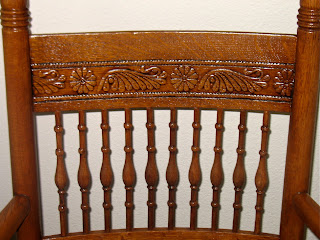Chippendale is probably one of the most well known furniture makers and we had the pleasure of working on a set of Chippendale style chairs in our shop. Actually these two chairs are so old, they may be originals.
As you can see, they came to us in really bad shape. One was completely in pieces but they both needed to be thoroughly re-glued. As we have worked on this set of chairs some really interesting things became apparent to us. These little things such neat historical clues.
The chairs have identical styling, as though they were made by the same furniture house, but they are also subtly different, as though different craftsmen made each one. Notice how the arms are the same curve, same pattern, but one has a wider flair than the other. One chair is also a tiny bit taller than the other. They both have the same shell motif on the front of the seat, but one is carved a little more shallow then the other. When we put together the way the joints were made, the tight grain of the mahogany wood (which means it really has to be very old) and the hand made details, we begin to see that these are very very old chairs.

With a little bit of digging about the history of Chippendale design, it begins to look as though these are original, late 1700's chairs, probably made in the Chippendale design house itself, and definitely made in England. English Chippendale furniture was made of Mahogany, whereas American manufacturers generally used Cherry. Thomas Chippendale also employed 40+ craftsmen who all used the same patterns, but each worked on a piece until completion. American makers used a more assembly style process which means that the slight variations in this chair have to be from English manufacture.

After we performed the extensive repairs and regluing that these chairs needed, we prepped them for staining and then our customer came in and chose the stain color herself. The color she chose, and that you see on these chairs in Dark Pine stain over Mahogany wood which gives a gorgeous rich red color. After staining with our water based stains, a glaze was applied so that the intricate carving that Chippendale chairs are known for, could be fully emphasized. Now all the chairs need is a new seat and they will be ready to grace the most elegant living room.
It has been such delight to bring these chairs back to life for our customer. They were her grandmother's chairs and have been in dis-repair for as long as she can remember. With such a beautiful history, it is good to have the chairs look beautiful as well.










